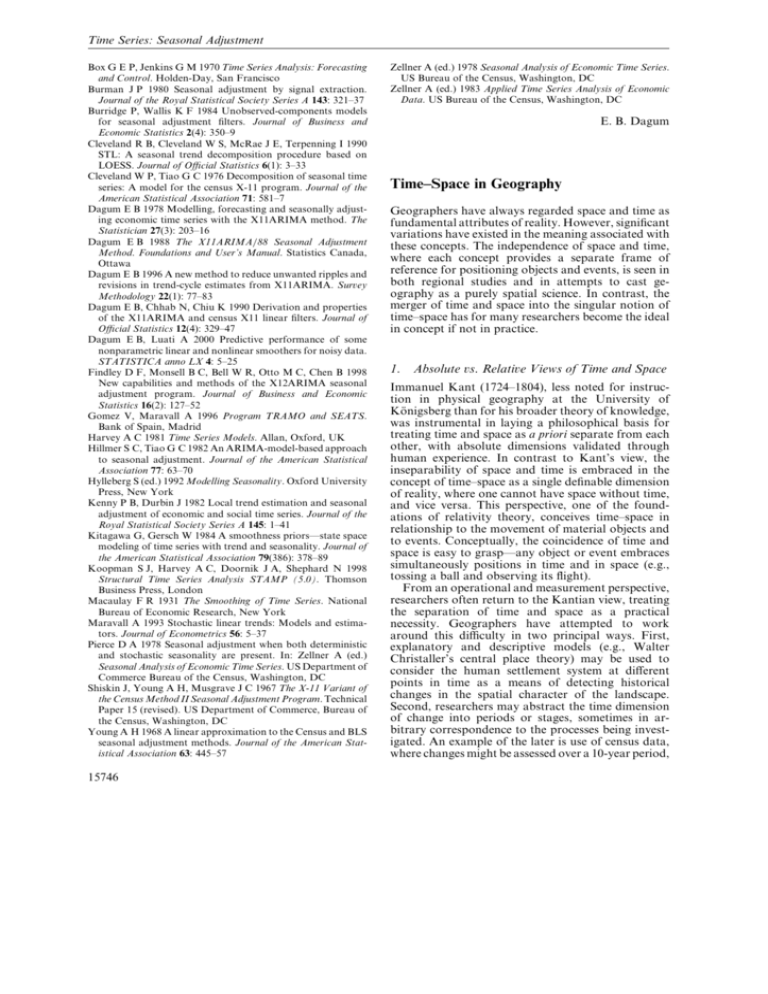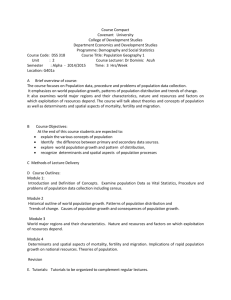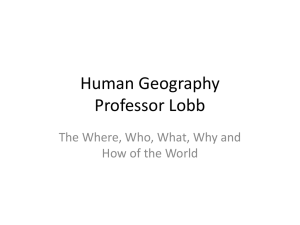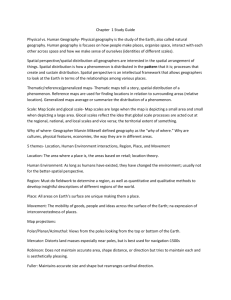
Time Series: Seasonal Adjustment
Box G E P, Jenkins G M 1970 Time Series Analysis: Forecasting
and Control. Holden-Day, San Francisco
Burman J P 1980 Seasonal adjustment by signal extraction.
Journal of the Royal Statistical Society Series A 143: 321–37
Burridge P, Wallis K F 1984 Unobserved-components models
for seasonal adjustment filters. Journal of Business and
Economic Statistics 2(4): 350–9
Cleveland R B, Cleveland W S, McRae J E, Terpenning I 1990
STL: A seasonal trend decomposition procedure based on
LOESS. Journal of Official Statistics 6(1): 3–33
Cleveland W P, Tiao G C 1976 Decomposition of seasonal time
series: A model for the census X-11 program. Journal of the
American Statistical Association 71: 581–7
Dagum E B 1978 Modelling, forecasting and seasonally adjusting economic time series with the X11ARIMA method. The
Statistician 27(3): 203–16
Dagum E B 1988 The X11ARIMA\88 Seasonal Adjustment
Method. Foundations and User’s Manual. Statistics Canada,
Ottawa
Dagum E B 1996 A new method to reduce unwanted ripples and
revisions in trend-cycle estimates from X11ARIMA. Surey
Methodology 22(1): 77–83
Dagum E B, Chhab N, Chiu K 1990 Derivation and properties
of the X11ARIMA and census X11 linear filters. Journal of
Official Statistics 12(4): 329–47
Dagum E B, Luati A 2000 Predictive performance of some
nonparametric linear and nonlinear smoothers for noisy data.
STATISTICA anno LX 4: 5–25
Findley D F, Monsell B C, Bell W R, Otto M C, Chen B 1998
New capabilities and methods of the X12ARIMA seasonal
adjustment program. Journal of Business and Economic
Statistics 16(2): 127–52
Gomez V, Maravall A 1996 Program TRAMO and SEATS.
Bank of Spain, Madrid
Harvey A C 1981 Time Series Models. Allan, Oxford, UK
Hillmer S C, Tiao G C 1982 An ARIMA-model-based approach
to seasonal adjustment. Journal of the American Statistical
Association 77: 63–70
Hylleberg S (ed.) 1992 Modelling Seasonality. Oxford University
Press, New York
Kenny P B, Durbin J 1982 Local trend estimation and seasonal
adjustment of economic and social time series. Journal of the
Royal Statistical Society Series A 145: 1–41
Kitagawa G, Gersch W 1984 A smoothness priors—state space
modeling of time series with trend and seasonality. Journal of
the American Statistical Association 79(386): 378–89
Koopman S J, Harvey A C, Doornik J A, Shephard N 1998
Structural Time Series Analysis STAMP (5.0). Thomson
Business Press, London
Macaulay F R 1931 The Smoothing of Time Series. National
Bureau of Economic Research, New York
Maravall A 1993 Stochastic linear trends: Models and estimators. Journal of Econometrics 56: 5–37
Pierce D A 1978 Seasonal adjustment when both deterministic
and stochastic seasonality are present. In: Zellner A (ed.)
Seasonal Analysis of Economic Time Series. US Department of
Commerce Bureau of the Census, Washington, DC
Shiskin J, Young A H, Musgrave J C 1967 The X-11 Variant of
the Census Method II Seasonal Adjustment Program. Technical
Paper 15 (revised). US Department of Commerce, Bureau of
the Census, Washington, DC
Young A H 1968 A linear approximation to the Census and BLS
seasonal adjustment methods. Journal of the American Statistical Association 63: 445–57
15746
Zellner A (ed.) 1978 Seasonal Analysis of Economic Time Series.
US Bureau of the Census, Washington, DC
Zellner A (ed.) 1983 Applied Time Series Analysis of Economic
Data. US Bureau of the Census, Washington, DC
E. B. Dagum
Time–Space in Geography
Geographers have always regarded space and time as
fundamental attributes of reality. However, significant
variations have existed in the meaning associated with
these concepts. The independence of space and time,
where each concept provides a separate frame of
reference for positioning objects and events, is seen in
both regional studies and in attempts to cast geography as a purely spatial science. In contrast, the
merger of time and space into the singular notion of
time–space has for many researchers become the ideal
in concept if not in practice.
1. Absolute s. Relatie Views of Time and Space
Immanuel Kant (1724–1804), less noted for instruction in physical geography at the University of
Ko$ nigsberg than for his broader theory of knowledge,
was instrumental in laying a philosophical basis for
treating time and space as a priori separate from each
other, with absolute dimensions validated through
human experience. In contrast to Kant’s view, the
inseparability of space and time is embraced in the
concept of time–space as a single definable dimension
of reality, where one cannot have space without time,
and vice versa. This perspective, one of the foundations of relativity theory, conceives time–space in
relationship to the movement of material objects and
to events. Conceptually, the coincidence of time and
space is easy to grasp—any object or event embraces
simultaneously positions in time and in space (e.g.,
tossing a ball and observing its flight).
From an operational and measurement perspective,
researchers often return to the Kantian view, treating
the separation of time and space as a practical
necessity. Geographers have attempted to work
around this difficulty in two principal ways. First,
explanatory and descriptive models (e.g., Walter
Christaller’s central place theory) may be used to
consider the human settlement system at different
points in time as a means of detecting historical
changes in the spatial character of the landscape.
Second, researchers may abstract the time dimension
of change into periods or stages, sometimes in arbitrary correspondence to the processes being investigated. An example of the later is use of census data,
where changes might be assessed over a 10-year period,
Time–Space in Geography
such as population growth within a region between
1990 and 2000. In contrast, frequently researchers also
define periods of time or stages according to the
dominance of certain social circumstances (for instance, the baby-boom period) or of prevailing technologies, such as the automobile era.
2. From Spatial to Time–Spatial Perspecties
Attempts in the 1950s and 1960s to recast geography
from a descriptive to a predictive science offer a clear
demarcation in the progression of thinking about
time–space in geography. In the traditional paradigm
of regional descriptive geography, time and space were
treated as separate even though attention was given to
documenting landscape conditions at different points
in time. Theoretical quantitative geography emerged
to counter the descriptive focus of this tradition, but
many researchers, nonetheless, retained the separation
of time from space in what was termed the exceptionalism of the spatial paradigm. This was most
pronounced in the advocacy of Schaefer (1953) and
Bunge (1962) for whom geography was a theoretical
science in search of spatial morphological laws. The
merger of geography’s theoretical thrust with practical
issues of society, however, necessitated a predictive
perspective.
Interest in prediction resulted in a shift of emphasis
from the depiction and explanation of geographical
patterns to that of process identification to understanding the dynamics of regional economies and the
nature of human spatial behavior. Thus, from a
fundamental focus on pure spatial form, attention
turned to the movements of objects and to the passage
of events through space and time. Models to simulate
urban growth and other phenomena as processes of
spatial diffusion (see Diffusion: Geographical Aspects)
(represent explicit attempts to mesh the time and space
dimensions in geographical research. Significant
statements advancing time–space perspectives are
found in Ha$ gerstrand’s (1973) conceptualizations
of spatial diffusion and time-geography, Janelle’s
(1969) formulation of time–space convergence,
and Harvey’s (1990) notion of time–space compression.
At the behavioral level, Ha$ gerstrand’s timegeography model of society stands out in its attempt
to capture the movement and activity participation of
people through graphic representation of their simultaneous and sequential space and time locations. The
concept of an individual’s time–space path portrays
the continuity of human existence as a line that
occupies space and time simultaneously and continuously, relative to a person’s activities in space
through the temporal cycles of the day or a lifetime.
The inherent Euclidean nature of this space is a
consequence of treating time and space as homogeneous media for movement, broken up in response
to social constraints that determine who has access to
specific spaces at given times and under what circumstances.
3. Time–Space Conergence and Human
Extensibility
Time–space convergence is a measure of change in the
effort required to overcome distance. Generally, it is
defined as the average rate of decline in travel time
between two places over time. For example, owing to
innovations that span the eras of stagecoach travel to
automobiles on limited-access highways, Boston and
New York have approached each other at an average
annual rate of 22 min per year between the years 1800
and 2000. The parallel concept of time–space divergence provides for the tangible measurement of increases in separation between places that result from
traffic congestion and failure to maintain infrastructure. Implicit in the convergence\divergence viewpoint
is the recognition that physical points (places on the
earth) are in relative motion with respect to one
another whenever functional measures (such as travel
time and cost) are used as the distance metric. Because
levels of investment in transportation and communication technologies are not uniform, some places
converge much more rapidly with the remainder of the
settlement system than others. Some places, bypassed
by modern space-adjusting technologies, will diverge,
and others will converge and diverge selectively relative to various parts of the urban system. Variations in
the set of rates that define convergence among all
possible pairs of places create a nonhomogeneous
time–space that is relative and dependent on the
inferred movement of places with respect to one
another. In this time–space, places are seen to compete
in their quest to gain relative accessibility over other
places, thereby gaining advantages for attracting
economic and other opportunities.
Time–space convergence is analogous to the physical
concept of velocity and purports to assess the earthshrinking impact of technological investments to
overcoming distance. As a time-rate changes over time,
it fits in the domain of metaconcepts. It is not a
velocity of sensation; rather it is a process identifiable
and abstracted only through measurement. The structure of the resulting space, the frame of reference for
human activities, is constantly in flux and is not
describable in terms of Euclidean geometry. Even
though this abstraction of reality may not be recognized intuitively, the time–space convergence\divergence process embraces explicit recognition of its
social origins as the result of deliberative innovation
through investment decisions. It is this human behavioral response to time–space convergence that reshapes the space of human geography. Yet, Forer
(1974) demonstrates reciprocity in this process,
whereby the existing spatial structure of society also
15747
Time–Space in Geography
influences emergent patterns of investment to encourage time–space convergence.
As a complement to time–space convergence, Janelle
(1973) advanced a reciprocal concept of human
extensibility. Developed more fully by Adams (1995),
this refers to the ability of an individual or agency to
extend their influence and presence over space and
through time to distant locations via media and other
means of influence over human resources. Human
extensibility parallels the construct of time–space
distanciation as advanced in Giddens’s (1984) structuration theory. Together, these concepts pose questions regarding the closure or spatial boundedness of
human societies and systems. They also bring forward
issues concerning the differential abilities of individuals, firms, nations, and other forms of human
agency to reach beyond their physical locations to
shape possibilities for human livelihood elsewhere.
Such discrepancies lead Harvey (1990) to advance yet
another conception of time–space, one rooted in the
historical materialism of the political economy.
4. Time–Space Compression
Harvey advances the notion of time–space compression and provides a compelling rationale for imbuing time–space with social content and experiential
meaning. This is brought about by attempts within
Capitalism to extract as much surplus value per unit of
time as possible. Though annihilation of space through
time is analogous to time–space convergence, the
broad implications of compression may be less amenable to direct measurement. Use of the term compression captures the general speeding up of all kinds
of events that intensify the turnover of capital and that
implode on human existence as substantive levels of
stress. Furthermore, in Harvey’s interpretation, the
transcendence of global capital over local domains
thrives on shortened time horizons and on the ability
to eradicate distance as an inhibitor to exchange and
dominance. The ability of capital to shift resources to
different places easily, and often with impunity to the
disruption of life at the local scale, suggests that timespace compression may denigrate the importance of
place in human society. It is in the inherent mobility
and speed of such possible actions that time–space
compression challenges any attempts to define the
time–space nature of society too rigidly.
5. Time–Space, Dynamic Cartographic
Visualization, and the Humanist Challenge
One of the issues that hinders broad application of
time–space perspectives in the social and behavioral
sciences is the difficulty inherent in representing the
underlying complexity in the human organization of
space through time. This is both an issue regarding the
nature of the tools at the disposal of researchers and of
15748
how questions in empirical research are linked within
alternative theoretical frameworks. The integration
of space-time analyses and modeling within the
frameworks of dynamic mapping, cartographic visualization, and Geographic Information Systems (see
Dynamic Mapping in Geography; Geographic Information Systems: Critical Approaches) holds promise
that research tools finally are catching up with needs of
social and behavioral scientists for assessing alternative theoretical constructs. The transfer of these
technologies to the interactive realm of the Internet
offers the potential for incorporating simultaneous
representation of processes through space and time.
Both real-time and simulated processes are possible.
Driving the interest in such developments are the
needs for planners, policy makers, and scholars to
understand the dynamic time–space transformations
that are occurring among places and regions as a
consequence of continuing advances in information
and communication technologies. However, these
transformations pose fundamental challenges to how
social and behavioral scientists interpret the meaning
of place in everyday life and to how they integrate
these interpretations within theoretical and decisionmaking frameworks (see Place in Geography; Space
and Social Theory in Geography).
Do the meanings of space and the meanings of time
mean anything aside from their relationship to one
another as time–space? The theoretical grounding of
answers to this question rest, in part, on the ability of
researchers to use the emerging tools of analytical
representation in their descriptions and analyses. At
the same time, answers rest fundamentally on being
able to recognize humanist qualities in the nature of
time–space (e.g., temporality and spatiality, as discussed in Kellerman (1989)). The humanization of
time–space acknowledges its relativity to different
value systems, recognizes its manifold possible metrics,
and is able to relate these to human thought processes
and experiences. Casting time–space in this manner
draws on past formulations and opens the realm of
possible investigations to include analytical time–space
prediction as well as research formulations grounded
in the approaches of critical science and postmodernism.
Bibliography
Adams P C 1995 A reconsideration of personal boundaries in
space-time. Annals of the Association of American Geographers
85: 267–85
Bunge W 1962 Theoretical Geography. Gleerup, Lund, Sweden
Forer P 1974 Space through time. In: Cripps E L (ed.) Spacetime Concepts in Urban and Regional Models, Pion, London,
pp. 22–45
Giddens A 1984 The Constitution of Society: Outline of the
Theory of Structuration. Polity Press, Cambridge, UK
Ha$ gerstrand T 1973 The domain of human geography. In:
Chorley R J (ed.) Directions in Geography, Methuen, London,
pp. 67–87
Time-use and Gender
Harvey D 1990 Between space and time: reflections on the
geographical imagination. Annals of the Association of American Geographers 80: 418–34
Janelle D G 1969 Spatial reorganization: a model and concept.
Annals of the Association of American Geographers 59: 348–64
Janelle D G 1973 Measuring human extensibility in a
shrinking world. Journal of Geography 72: 8–15
Kellerman A 1989 Time, Space and Society: Geographical
Societal Perspecties. Kluwer Academic Publishers,
Dordrecht
Schaefer F K 1953 Exceptionalism in geography: A methodological examination. Annals of the Association of American
Geographers 43: 226–49
D. G. Janelle
Time-use and Gender
Men and women have to make decisions on how to use
their time, as a day has only 24 hours, or rather time is
limited. Activities men and women make decisions
about can be divided into paid work, domestic work
and childcare, personal obligations, and leisure. Time
has become an increasingly scarce good; newspapers
and other media abound with stories suggesting that
time pressure is becoming a real epidemic. The article
discusses how time use is measured and the patterns of
time use of men and women and provides explanations
of gender differences.
what they were doing at all times for a day or more. In
some studies the main activity is noted in fixed interval
units (e.g., in quarters of an hour) while in others
intervals are left free (i.e., starting and finishing times
are indicated). The period of time when the diary is
kept also differs. In some cases respondents are only
required to keep a diary for a single day, while in
others they are asked to do so for a whole week. The
time diary method prevents respondents from exaggerating the durations of their favorite activities while
neglecting the time devoted to day-to-day concerns
and trivialities. Thus, the actual subject being studied
is not overstated, which sometimes happens when
specialized questionnaires are used. A serious limitation of time diaries is the difficulty in dealing with
more than one activity performed simultaneously
(Warner 1986). For example, people may cook dinner
while supervising children, or sew while watching
television. Another method to measure patterns of
time use is asking direct questions that require men
and women to estimate their usual time spent on a list
of activities. In order to help the respondent, in these
questionnaires often domestic work is distinguished
into some clear categories like cooking, cleaning,
doing the laundry, and shopping. Those few studies
that compare time-diary to direct-question data find
that direct questions typically produce higher time
estimations than time-diary questions (Juster and
Stafford 1991), especially for activities that occur
frequently (Marini and Shelton 1993). Both husband
and wife overestimate their time devoted to domestic
duties.
1. The Measurement of Time-use
2. Time-use Patterns
To understand time use of men and women, it can be
categorized in several ways. If one is interested in paid
work and leisure, a distinction is made between work
vs. nonwork activities. With respect to the division of
labor between husbands and wives, the most frequently used division is between paid work, domestic
work and childcare. It is evident what is meant by paid
work, and most authors use more or less the same
description. However, household labor can be defined
in a variety of ways. Naturally, cooking and cleaning
are domestic tasks, but it isn’t clear how to classify
activities that are part leisure and part work, such as
vegetable gardening, gourmet cooking, or playing
with the children. Leisure is a broad category, including indoor activities like reading books and
watching television, outdoor activities like sporting,
but also social contacts and going out for dinner.
Personal obligations often form a kind of residual
category, including activities like sleeping and eating
at home.
The most accurate and reliable way to measure the
time use of people is the time diary method (Andorka
1987, Juster and Stafford 1991, Harvey 1993). In this
approach, respondents are asked to keep records of
There has been a traditional gender division of time
consuming activities within western societies: women
used to do most of the household work and childcare,
whereas men worked for pay the whole day and were
responsible for providing family income. This has
changed substantially in recent decades. In the western
world, women’s paid work has increased vastly. Now
a majority of women in many nations are employed
for pay, something that would have been hard to
imagine just after the Second World War. Despite the
overall increase in levels of women’s employment large
differences exist between countries in the northern
continents. Nordic countries, such as Sweden and
Denmark, have had higher levels of female labor force
participation than other western countries for a long
time. The Anglo-Saxon countries, such as the USA
and the UK were runners up, while in Italy, Spain and
Greece still less than half of the active female
population has a paid job. For Eastern Europe, the
picture is different. The communist ideology, established after the Second World War in Eastern Europe
with the exception of Russia, forced many women to
enter the labor market. In the 1960s already three
quarters of the women had a paid job. Despite the
15749
Copyright # 2001 Elsevier Science Ltd. All rights reserved.
International Encyclopedia of the Social & Behavioral Sciences
ISBN: 0-08-043076-7









